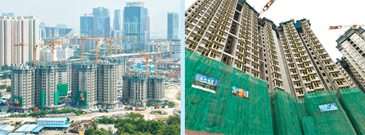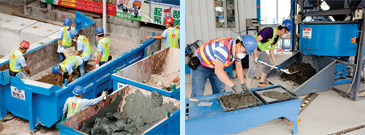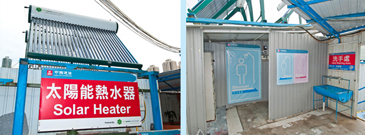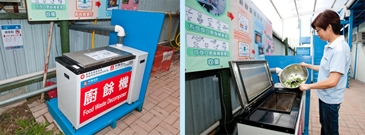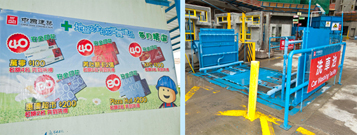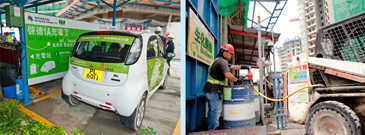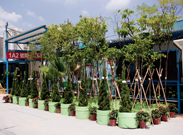Low Carbon Construction Adopted for Kai Tak PRH Project
The Housing Authority’s (HA’s) Kai Tak Site 1A Public Rental Housing (PRH) Project, located at the north apron of the former Kai Tak Airport, consists of a total area of 34 700m². When construction is complete, it will include six residential blocks of 35 to 40 storeys as well as a commercial centre and car park. This project is unique as, based on our 5R principles, it has adopted a number of low carbon construction measures and green practices. This means that during construction, we will be able to reduce carbon emissions by a total of 54 000 tons, the amount absorbed by over two million trees a year.
The 5Rs consist of five environmental principles, namely:
Reduce – using less resources, generating less waste and exhaust emissions;
Reuse – extending the lifespan of products and reusing resources as much as possible;
Recycle – collecting and separating waste while also recycling waste into usable new products;
Replace – replacing exhaustive resources and production methods with green measures using renewable resources, energy and tools;
Respect – respecting our environment and minimising the impact and damage to the global ecological system.
The low carbon construction measures and green practices adopted at the Kai Tak Site can be categorised as follows:
Precast Concrete Components and Fabric Reinforcement – Precast concrete components, including fabric reinforcement, are being widely used in the project. As fabrication is carried out in the factory, the use of materials, water and electricity are all carefully controlled, thus reduces unnecessary wastage and carbon emissions.
Green Treatment of Marine Mud – Traditionally regarded as a construction nuisance, marine mud, mixed with cement and sand, is being processed at the treatment plant on-site. It is then used as backfill material or turned into other products, like paving tiles.
Building Integrated Photovoltaic Systems (BIPV) and Solar Water Heaters – The BIPV systems can generate electricity up to approximately 10 850 kW per year. They will be transforming solar energy into lighting for the commercial centre, thus reducing the demand for traditional electricity. A solar water heater has also been installed for staff showers, reducing the development’s carbon footprint and at the same time improving working conditions.
Food Waste Decomposer and Recycler – The decomposer transforms leftover food into fertiliser, which is then used for the planters on-site. The fertiliser is also donated to neighbouring schools, helping to build positive relationships in the vicinity.
Waste separation and recycling – This is being implemented on site through education, publicity and recognition awards to raise workers’ awareness with regard to reducing waste and the burden imposed on landfills. Further green measures, such as the reuse of tested materials and concrete for temporary site drainage as well as using recycled water to clean vehicles, are also adopted.
Electric Vehicles and Green Diesel – With its zero-emissions, the use of electric vehicles as contract cars helps to reduce roadside air pollution and save energy. Bio-diesel produced from waste cooking oil is also used to drive construction equipment, from mini-loaders and excavators to delivery trucks for precast elements. The use of bio-diesel reduces greenhouse gases and carbon emissions.
Green Site – Large-scale greening on site and along street railings, providing a total green area over 2 000m², helps to absorb carbon emissions while also beautifying the environment. The young trees will later be transplanted as part of the landscape in the estate.













